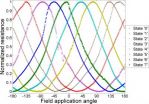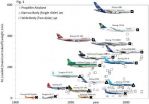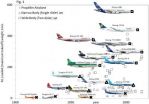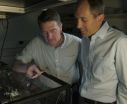(Press-News.org) Contrary to previous assumptions, researchers find that preschoolers are able to gauge the strength of their memories and make decisions based on their self-assessments. The study findings are published in Psychological Science, a journal of the Association for Psychological Science.
"Previously, developmental researchers assumed that preschoolers did not introspect much on their mental states, and were not able to reflect on their own uncertainty when problem solving," says psychological scientist Emily Hembacher of the University of California, Davis, lead author of the study. "This is partly because young children are not usually able to tell us much about their own mental processes due to verbal limitations."
In several previous studies in their lab, Hembacher and co-author Simona Ghetti observed that preschoolers reported feeling uncertain after giving wrong answers during tasks, suggesting the preschoolers were capable of metacognition — the ability to evaluate one's own thoughts and mental states.
The researchers decided to examine preschoolers' metacognition about their memories, given its importance for learning. They investigated whether kids could assess their confidence in their memories and use those assessments in deciding whether to exclude answers they had generated but were unsure of when given the option.
Eighty-one children ages 3, 4, and 5 participated in the study. The preschoolers viewed a series of drawings of various items, such as a piano or a balloon. Half of the images were presented once, and the other half were shown twice. Next, the children were presented with a pair of images: one they had seen, and a new one they had not seen. The children were instructed to pick which image they'd seen before in the previous task.
After making their choice, the preschoolers rated how confident they were that their choice was correct. They then sorted their answers into two boxes. One box was for the responses that children were confident about and wanted researchers to evaluate for a prize. The other one was for responses the children thought might be mistaken and that they didn't want researchers to see.
The data revealed that only 4- and 5-year-olds reported being less confident in their incorrect than their correct memory responses. They were also more confident about images they'd seen twice, suggesting that they could distinguish between stronger and weaker memories. Older preschoolers were also more likely to decide whether they wanted researchers to see their answers based on their confidence level.
Although 3-year-olds didn't display the same kind of metacognitive capability on individual responses, the data showed that 3-year-olds who had scored well reported higher confidence overall than kids who hadn't scored as well.
When the researchers analyzed just the correct answers, they found that preschoolers of all ages sorted responses they weren't as confident about to the box they didn't want researchers to evaluate. So, while they may not be as advanced as their older peers, even children as young as 3 seem to display some ability to reflect on their own knowledge.
The findings contribute to research on the reliability of children's eyewitness testimony in a court of law, and they carry important implications for educational practices.
"Previous emphasis on the development of metacognition during middle childhood has influenced education practices aimed at strengthening children's monitoring and control of their own learning," says Hembacher. "Now we know that some of these ideas may be adapted to meet preschoolers' learning needs."
INFORMATION:
This research was supported by a grant from the National Science Foundation (NSF; BCS 0843428) to S. Ghetti.
All data have been made publicly available via Open Science Framework and can be accessed at https://osf.io/5zimh/. The complete Open Practices Disclosure for this article can be found at http://pss.sagepub.com/content/by/supplemental-data. This article has received the badge for Open Data. More information about the Open Practices badges can be found at https://osf. io/tvyxz/wiki/view/ and http://pss.sagepub.com/content/25/1/3.full .
For more information about this study, please contact: Emily Hembacher at emily.hembacher@gmail.com.
The article abstract is available online: http://pss.sagepub.com/content/early/2014/07/10/0956797614542273.abstract
The APS journal Psychological Science is the highest ranked empirical journal in psychology. For a copy of the article "Don't Look at My Answer: Subjective Uncertainty Underlies Preschoolers' Exclusion of Their Least Accurate Memories" and access to other Psychological Science research findings, please contact Anna Mikulak at 202-293-9300 or amikulak@psychologicalscience.org.
Preschoolers can reflect on what they don't know
2014-07-22
ELSE PRESS RELEASES FROM THIS DATE:
Extra exercise helps depressed smokers kick the habit faster
2014-07-22
This news release is available in French. Montreal, July 22, 2014 — People diagnosed with depression need to step out for a cigarette twice as often as smokers who are not dealing with a mood disorder. And those who have the hardest time shaking off the habit may have more mental health issues than they are actually aware of.
Those insights were among the collective findings recently published in the journal Nicotine & Tobacco Research by a team of researchers based in part at Concordia University.
While nearly one in five North American adults are regular smokers, ...
CEOs who motivate with 'fightin' words' shoot themselves in the foot
2014-07-22
Heading into the war room to fire up the troops? Declaring war on the competition to boost sales? Well, CEO, you might want to tamp down them's fightin' words—you could be shooting yourself in the foot.
A new Brigham Young University business study finds that bosses who try to motivate their employees with violent rhetoric—think of Steve Jobs declaring "thermonuclear war" on Samsung—end up motivating rival employees to play dirty.
"Business executives use violent language all the time," said David Wood, BYU professor of accounting and one of two BYU authors on the paper. ...
Dangers of desert dust: New diagnostic tool for valley fever
2014-07-22
VIDEO:
In this video, biodesign researcher Krupa Navalkar describes a new diagnostic technique for pinpointing Valley Fever.
Click here for more information.
On July 5, 2011, a massive wall of dust, ("haboob," in Arabic), blanketed Phoenix, Arizona, creating an awesome spectacle, (or stubborn nuisance, depending on your perspective). Dust storms are a common occurrence in the arid desert environments of the American Southwest.
But windborne dust can be a serious health risk, ...
A new multi-bit 'spin' for MRAM storage
2014-07-22
WASHINGTON D.C., June 22, 2014 -- Interest in magnetic random access memory (MRAM) is escalating, thanks to demand for fast, low-cost, nonvolatile, low-consumption, secure memory devices. MRAM, which relies on manipulating the magnetization of materials for data storage rather than electronic charges, boasts all of these advantages as an emerging technology, but so far it hasn't been able to match flash memory in terms of storage density.
In the journal Applied Physics Letters, from AIP Publishing, a France-U.S. research team reports an intriguing new multi-bit MRAM storage ...
Fly-inspired sound detector
2014-07-22
WASHINGTON D.C., June 22, 2014 – Even within a phylum so full of mean little creatures, the yellow-colored Ormia ochracea fly is distinguished among other arthropods for its cruelty -- at least to crickets. Native to the southeastern U.S. states and Central America, the fly is a most predatory sort of parasite. It swoops onto the back of a singing male cricket, deposits a smear of larvae, and leaves its wicked brood to invade, kill and consume the cricket from inside out.
None of this would be possible without the fly's ability to find a cricket -- the cornerstone of ...
Law of physics governs airplane evolution
2014-07-22
DURHAM, N.C. -- Researchers believe they now know why the supersonic trans-Atlantic Concorde aircraft went the way of the dodo -- it hit an evolutionary cul-de-sac.
In a new study, Adrian Bejan, professor of mechanical engineering and materials science at Duke University, shows that a law of physics he penned more than two decades ago helps explain the evolution of passenger airplanes from the small, propeller-driven DC-3s of yore to today's behemoth Boeing 787s. The analysis also provides insights into how aerospace companies can develop successful future designs.
The ...
The evolution of airplanes
2014-07-22
WASHINGTON D.C. July 22, 2014 -- One of the traditional arguments against Darwinian evolution has been that no one can confirm the process exists because it occurs on a time scale immensely greater than a human lifetime. Adrian Bejan, the J. A. Jones Distinguished Professor of Mechanical Engineering at Duke University, has disagreed with that notion ever since 1996 when he discovered the Constructal Law, a fundamental principle of physics that underlies the evolution of flow systems as they change in design over time.
In a new paper in the Journal of Applied Physics, ...
Bats use polarized light to navigate
2014-07-22
Scientists have discovered that greater mouse-eared bats use polarisation patterns in the sky to navigate – the first mammal that's known to do this.
The bats use the way the Sun's light is scattered in the atmosphere at sunset to calibrate their internal magnetic compass, which helps them to fly in the right direction, a study published in Nature Communications has shown.
Despite this breakthrough, researchers have no idea how they manage to detect polarised light.
'We know that other animals use polarisation patterns in the sky, and we have at least some idea ...
'Comb on a chip' powers new NIST/Caltech atomic clock design
2014-07-22
Researchers from the National Institute of Standards and Technology (NIST) and California Institute of Technology (Caltech) have demonstrated a new design for an atomic clock that is based on a chip-scale frequency comb, or a microcomb.
The microcomb clock, featured on the cover of the inaugural issue of the new journal Optica,* is the first demonstration of all-optical control of the microcomb, and its accurate conversion of optical frequencies to lower microwave frequencies. (Optical frequencies are too high to count;microwave frequencies can be counted with electronics.)
The ...
Mount Sinai scientists and international team shed new light on schizophrenia
2014-07-22
NEW YORK, NY -- As part of a multinational, collaborative effort, researchers from the Icahn School of Medicine at Mount Sinai have helped identify over 100 locations in the human genome associated with the risk of developing schizophrenia, in the largest genomic study published on any psychiatric disorder to date, conducted with 80,000 people. The findings, published online in Nature, point to biological mechanisms and pathways that may underlie schizophrenia, and could lead to new approaches to treating the disorder, which has seen little innovation in drug development ...





